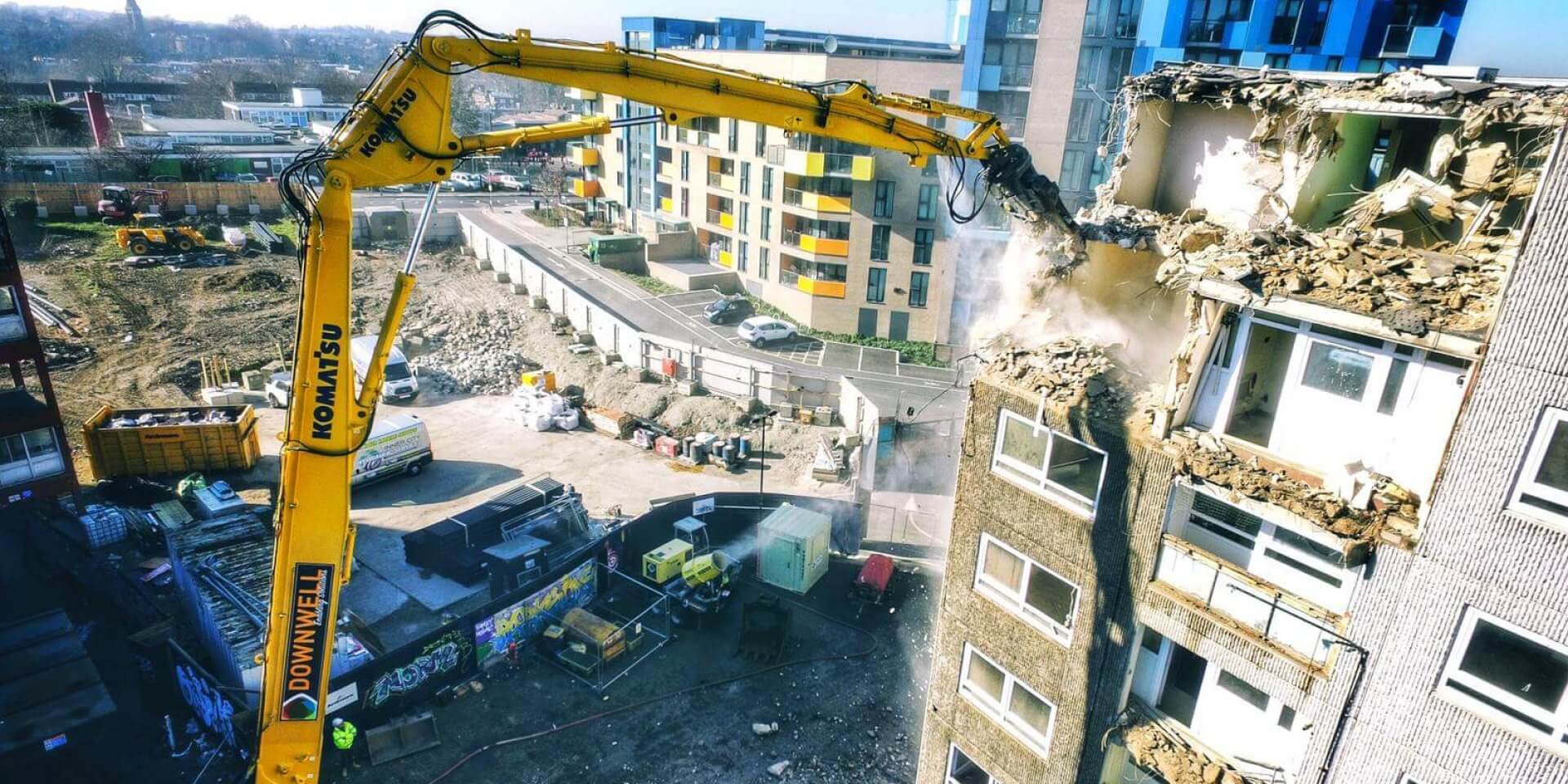Video of the latest implosion by explosives veteran Dick Green.
IndEx’s Dick Green has just completed his latest explosive demolition, this time at RAF St Athan in South Wales. The building was an old water tower and involved both IndEx and SES.
The tower was in a tight location with buildings on all 4 sides in close proximity. 2 side buildings were less than 10m away, and a pump and tank were 8m to the rear. Closest of all was a cast water main just 1m from the front of the building.
In order to get a vertical collapse they used 10kg of explosives placed in 250 holes. The end result was a perfect takedown with no damage caused to the surrounding structures.
To view a video of the resulting implosion, please visit the DemolishDismantle website.





 A protest action was held against demolition of “
A protest action was held against demolition of “
 The producers of an HBO television series about life after Hurricane Katrina are fighting to stop the demolition of a row of New Orleans homes the city says are in danger of collapsing.
The producers of an HBO television series about life after Hurricane Katrina are fighting to stop the demolition of a row of New Orleans homes the city says are in danger of collapsing.